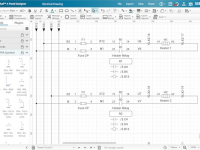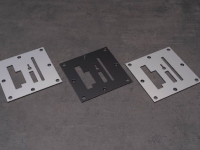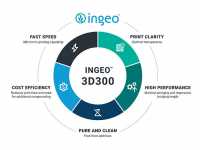
March 30, 2021
After years of primarily being used to create prototypes and models, 3D printing technology is increasingly proving its worth for the production of end use parts across a wide variety of industries.
One important application for the technology has been the creation of spare parts, jigs and fixtures in a production environment. There is a high cost associated with maintaining an inventory of these parts for equipment that may be in service for years or even decades. 3D printing allows companies to create these parts on demand.
We asked the experts at Ultimaker how their 3D printers are used to create end use parts. In this Insider Q&A, see how Ultimaker customers are leveraging 3D printing to improve their manufacturing operations.
Download today
Latest News

Capital X Panel Designer: Revolutionizing Electrical CAD with Cloud-Native Technology
Discover the future of electrical CAD for small and medium-sized businesses (SMBs). Capital X Panel Designer (previously known as Capital...

AI-Powered Design: Expert Takes
Several vendors offer a deeper perspective on how AI-powered design relates to and impacts generative design, topology optimization and more.

meviy Expands its Sheet Metal Processing Lineup
The aluminum composite plate is made for those looking to reduce part weight while maintaining structural integrity, according to meviy.
Digital Twin Consortium Announces Joint Event
The event will take place on March 20, 2025, from 8:15 a.m. to 5 p.m. in Reston, VA.

Altair Unveils Altair HyperWorks 2025
The release combines artificial intelligence (AI), high-performance computing (HPC), and multiphysics simulation with cloud-based scalability and digital thread connectivity.

NatureWorks Introduces Ingeo 3D300 3D Printing Grade
Faster printing for the additive manufacturing industry, according to NatureWorks.
All posts
Related Topics
New & Noteworthy

New & Noteworthy: Future-Proof Foundation for Employee Training and Education
Eagle Point Software's Peak Experience for Pinnacle Series adds AI chat, improved...

Eliminate Physical Clamping – With Simulation
The Virtual Clamping tool in ANSA (VCA) from BETA CAE Systems eliminates...

New & Noteworthy: Fast, Flexible and Scalable Simulation – In the Cloud
Ansys Access on Microsoft Azure enables seamless deployment of industry-leading simulation tools...

New & Noteworthy: Safe, Cost-Effective Metal 3D Printing - Anywhere
Desktop Metal’s Studio System offers turnkey metal printing for prototypes and...
